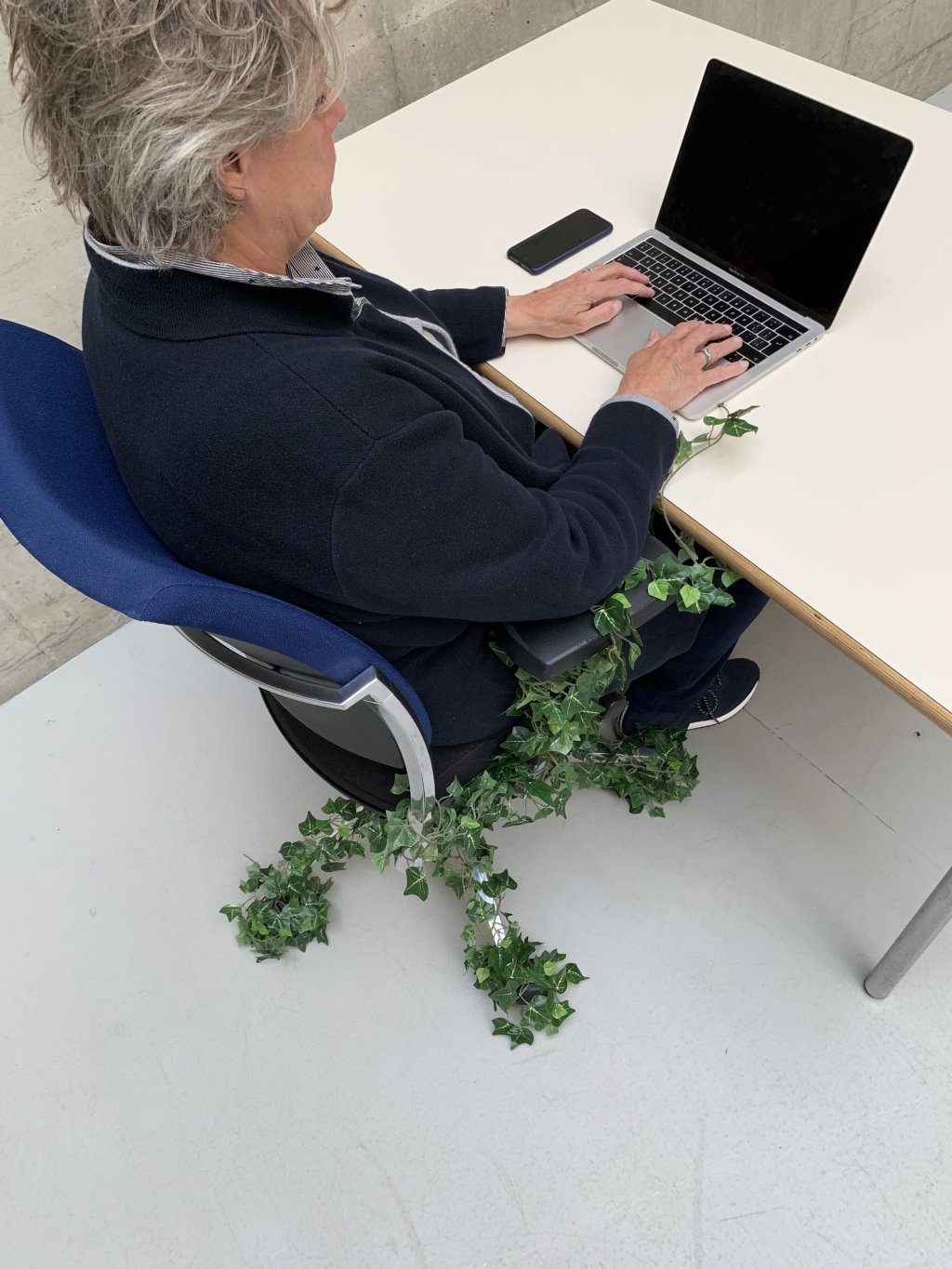Your day at the office is full of choices – some conscious and some not. Take sitting, for example, this is usually a subconscious choice. It’s something we do without thinking, for hours on end. But our sedentary lifestyles are a growing health risk: being inactive is the fourth leading cause of death worldwide. How can we change this? A current trend in health interventions is to transform everything into numbers and graphs. You have an app that notifies you when you reach your daily step goal, you can get a detailed overview of your sleep quality, and you receive a prompting message if you have been sitting for too long. What if there was a more meaningful way to encourage healthy behaviour?
The design of ‘Ivy’ counters the current trend of digitalisation and quantification of health interventions. Ivy is an office chair that aims to increase awareness of sitting behaviour of office workers by measuring sitting time and visualising this behaviour via an ivy plant growing on the office chair. The longer one sits on Ivy, the more ivy strands will grow on the handrails and legs of the chair, which ultimately immobilises the chair after two hours of prolonged sitting.
The main material, the ivy plant, was selected because it will only grow on something when it is able to stay in the same spot for a long period of time. Also, it’s commonly-known that some types of ivy are poisonous, which alludes to one of the most ‘poisonous’ behaviours of recent time, sitting.
Instead of graphs and numbers, Ivy uses data physicalisation as a qualitative interface that represents sitting. The design, the process, and future research steps of Ivy can be seen as a critical perspective on sedentary behaviour interventions. Ivy is intended to spark discussion amongst designers and researchers in the field of Human-Computer Interaction . Ivy demonstrates qualitative interfaces as a promising approach to deepen the user’s relationship with the targeted behaviour and enrich the ability to construct meaning from the feedback.



